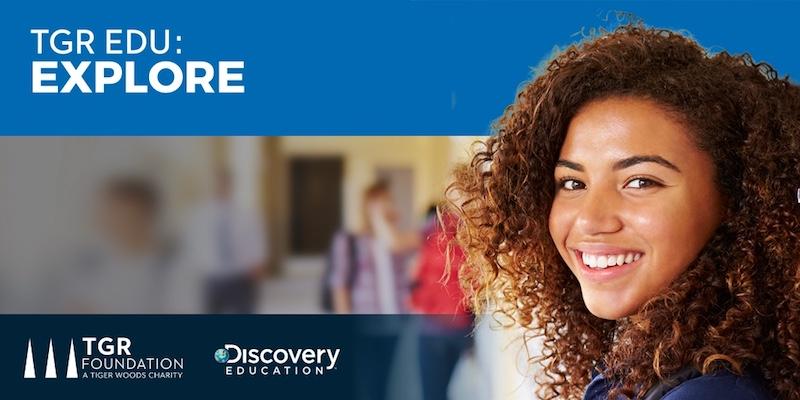Connecting Students to the Real World Through Project-Based Learning
By Eric Moore, Senior Director of Programs at TGR Foundation

A project-based learning approach to teaching means connecting students to the real-world through thought-provoking activities designed to challenge and inspire by doing. It’s an effective way to introduce students to multiple subjects while helping them build critical thinking skills.
As defined by PBLWorks, project-based learning “is a teaching method in which students gain knowledge and skills by working for an extended period of time to investigate and respond to an authentic, engaging, and complex question, problem, or challenge.”
Learning comes alive with project-based learning, because it connects students to the real-world. As students focus on a project, they engage in various tasks and challenges, exploring vital problem-solving skills. In addition, learning to share the findings, either in formal presentations or informal chats, strengthens communication skills.
In short, project-based learning empowers the students of today for successful careers of tomorrow, while supporting the development of essential skills they will use throughout their lives.
Resources from TGR EDU: EXPLORE
Lessons from TGR EDU: EXPLORE offer educators an easy way to integrate project-based learning into the anywhere classroom with content that spans multiple disciplines for students in grades 6-12. Taking only about an hour, the selected lessons provide everything teachers need to integrate project-based learning that fosters strong career-ready skills into existing curriculum:
Career Path: Goal setting, organizing, and illustrating future career pathways.
The U.S. Department of Education has identified 16 career clusters that lead to over 70 different career pathways and hundreds of jobs. In this activity, students learn about career clusters and pathways that are available to them after graduation. In order to pinpoint specific careers that will align with students’ interests, students take a Careers Cluster Interest Survey, conduct online research, and interview individuals in their family or community to identify the careers that would make them the happiest, challenged, and fulfilled.
Key Learning Outcomes: Creativity, communication, and critical thinking
Content Areas: College and career readiness
Objectives:
- Complete a career clusters interest survey
- Conduct research on three potential career choices
- Conduct interviews with people in careers that interest them
- Identify career paths that are of interest
Academic Resume: Reflection and sharing to understand the importance of leadership and community service in the college application process.
Students start out by reflecting on what leadership and community service are and how they relate to one another. They then identify unique ways they have demonstrated leadership and community service, and practice “bragging” about these examples to a peer. Finally, students compile and organize information to help them “brag” about their accomplishments, activities, interests, and leadership qualities in a personal academic resume that could be used as part of their college admissions process. They also consider what contributions they could make to their future college community.
Key Learning Outcomes: Creativity, communication, and critical thinking
Content Areas: College and career readiness, leadership, and community service
Objectives:
- Define and share examples of leadership and community service.
- Reflect on their own leadership skills and on the contributions they make/have made to their communities.
- Envision what kind of contribution they will make to their college campus community.
- Create a first (i.e. “working”) draft of a personal academic resume.
Find Your Passion: Goal setting, reflection, and brainstorming to design a future aligned to passions.
As the saying goes, if you love what you do, you never work a day in your life. Allow students to see how their passions and interests can lead to a promising, life-long career. In this activity, students identify the things they love doing and brainstorm their “wildest dreams” for the future in order to discover their passion(s) and set themselves on a path to achieve their goals. They create mind maps to help them visualize, organize, and illustrate their future pathways. They translate this information into goals for themselves, with written action plans to help them achieve them. Students identify short-term, mid-range, and long-term goals and predict how long it might take them to reach these goals.
Key Learning Outcomes: Creativity and communication
Content Areas: College and career readiness, and goal setting
Objectives:
- Create a mind map that illustrates how they envision their futures
- Identify short-term, mid-range, and long-term goals
- Write action plans for accomplishing one or more of their goals
Encourage creativity and confidence through goal setting.
Hands-on and thought-provoking activities amplify students’ creativity, helping them grow critical problem-solving skills that benefit all aspects of life, especially careers.
Project-based learning fosters self-directed exploration that can be easily integrated into multiple subjects. Implement project-based learning activities to your advantage in lessons by weaving them into existing curriculum or using them as a stand-alone teaching moment.
To learn more about TGR EDU: EXPLORE, please visit tgreduexplore.org.

